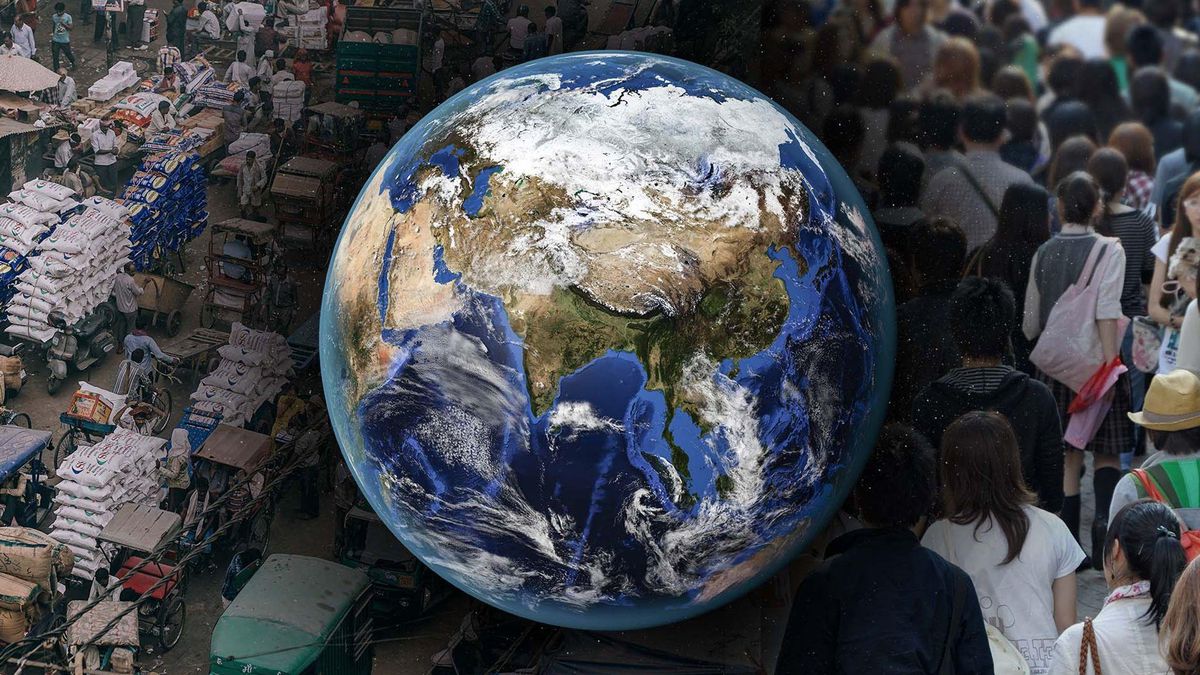The world's population is set for a fascinating and tumultuous journey over the next few decades. According to the latest United Nations report, the global population is forecasted to peak at around 10.3 billion in the mid-2080s before declining slightly to 10.2 billion by the end of the century. Released on World Population Day, this report offers a detailed insight into the shifting demographics that are expected to shape the future of our planet.
The UN's revised estimates mark a significant shift from previous predictions. A decade ago, experts believed that the world population could rise as high as 11 billion by 2100. However, recent data indicates a slowdown in population growth, driven largely by decreasing fertility rates in some of the world's most populous nations.
It's particularly intriguing to note that countries like China, which is seeing a rapid decline in population, play a crucial role in this revised projection. China's total fertility rate (TFR) has plummeted from 1.2 children per woman in 2022 to just 1 in 2024. This drastic drop, combined with the legacy of the one-child policy, is set to halve China's population from 1.4 billion in 2024 to about 633 million by 2100. Such a dramatic shift will have far-reaching implications globally.
This phenomenon isn't limited to China. Nations like Italy, South Korea, and Spain also grapple with "ultra-low" fertility rates, where women have fewer than 1.4 children on average. Meanwhile, in more than half of all countries, fertility rates have fallen below the 2.1-child threshold needed to maintain current population levels without migration.
So why is this significant? As U.N. Undersecretary-General for Economic and Social Affairs Li Junhua puts it, the earlier and lower population peak is a "hopeful sign". Lower aggregate consumption could mean reduced environmental pressure. Yet, Li highlights that individual environmental impacts must still be minimized to ensure a sustainable future. While some see this demographic shift optimistically, others argue that it introduces new challenges. "For example, if fertility remained constant, the human population could skyrocket to 18 billion by the end of the century," asserts Patrick Gerland, the chief of population estimates at the UN. These estimates underscore a critical demographic divide. While over 100 countries will see their populations peak or decline, many will continue to grow, especially among the world's poorest nations.
These projections underline a growing demographic divide where certain areas witness rapid growth while others experience decline. Countries like Brazil, Iran, and Turkey are expected to see their populations peak by the mid-21st century. Meanwhile, nations such as the United States, India, Nigeria, and Pakistan will likely continue to see population growth until the latter part of the century. In some places, like Angola and Somalia, populations are predicted to double by 2054.
The implications of such changes are profound. More people will mean increased demand for resources, while declining populations in some regions may lead to economic challenges. Policymakers must consider these trends as they plan for the future, seeking to balance growth with sustainability.
It's also important to consider the role of international migration, a factor that could significantly alter demographic landscapes. In countries with declining populations, welcoming immigrants may become essential to sustaining economic growth and labor markets. Conversely, nations experiencing rapid growth may face pressures on infrastructure, healthcare, and education systems.
The demographic landscape isn't static. Historical data reveals a dramatic increase from 2.6 billion in 1950 to 8 billion people by November 2022. This rise, although slowing, continues to shape societies in myriad ways. While the global population has now grown to around 8.2 billion, it's the distribution and characteristics of this growth that tell the more complex story.
For instance, in China, a significant generational shift is underway as today's child-bearing adults come from single-child families, a remnant of the one-child policy. This shift impacts social and family norms, with fewer siblings likely affecting everything from support networks to consumer behavior. These nuanced aspects of demographic change demand a closer look as they reveal much about the evolving human experience.
As we move forward, monitoring these trends becomes crucial. The World Population Prospects 2024 report, a comprehensive dataset tracking global trends from 1950 onwards, offers invaluable insights for policymakers, educators, and researchers. It provides not just numbers but contextual understanding, helping to formulate strategies that address both immediate and long-term challenges posed by changing demographics.
There's also a pressing need to address the varying impacts of population changes. Countries with burgeoning populations need to invest in infrastructure and social services to support growing demands, while those facing population declines must innovate to maintain economic stability.
In conclusion, the world stands at a demographic crossroads. The latest projections shed light on a future where population dynamics will influence every facet of life, from environmental sustainability to economic policies. As Li Junhua aptly notes, "people will still need to individually reduce the impact of their activities to preserve the environment." Understanding these projections allows us to prepare for a future where demographic realities will challenge us to rethink growth, resource management, and sustainability. Whether you view these changes as a sign of progress or a potential crisis, one thing is clear: the world of tomorrow is steadily taking shape, and it will look markedly different from today.




